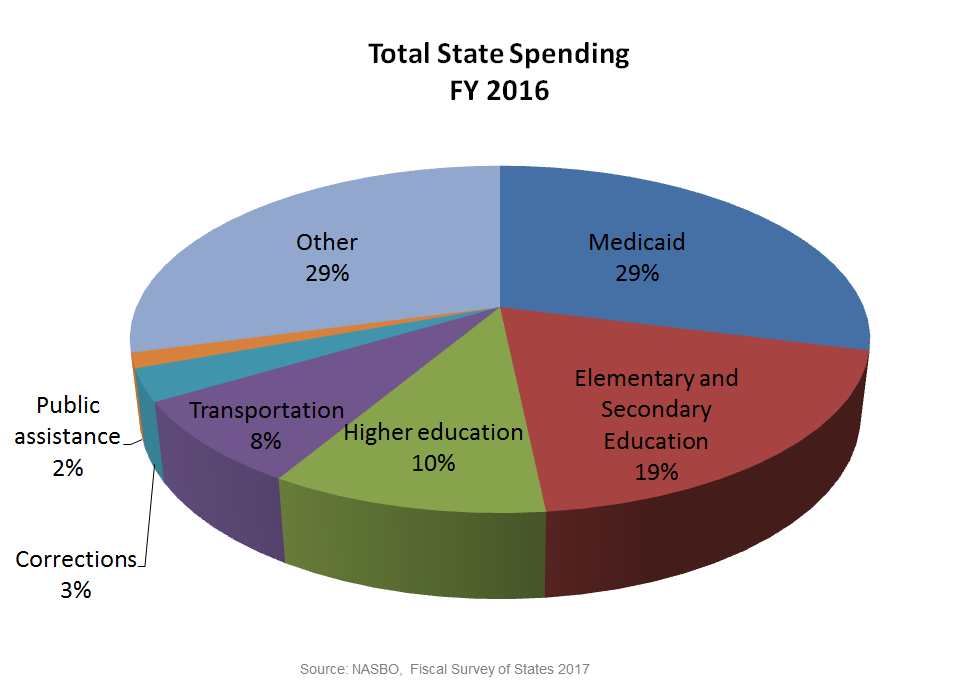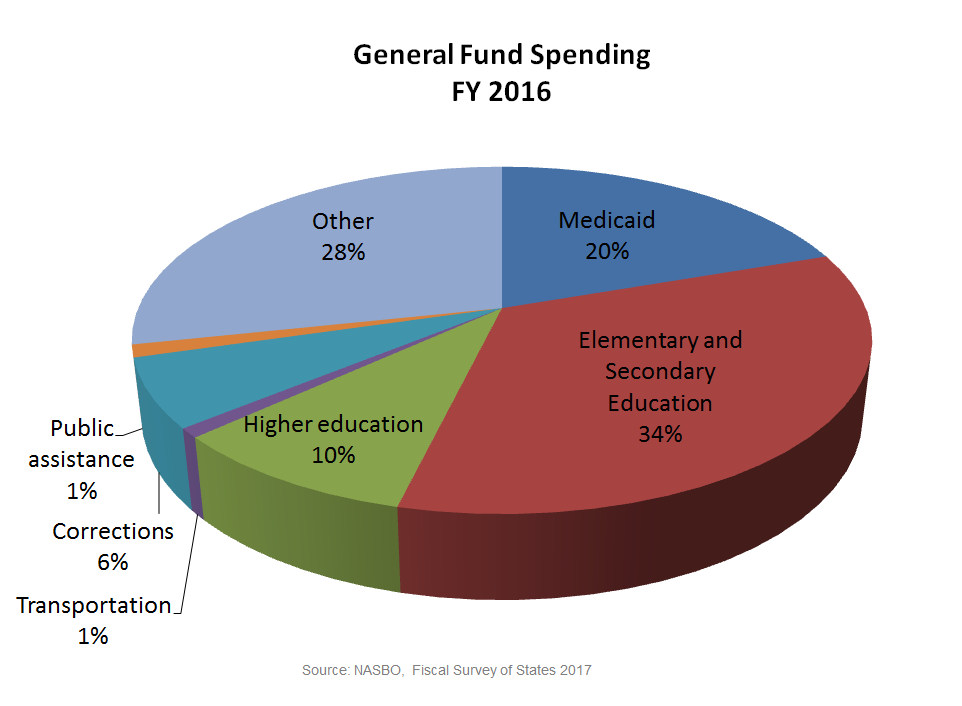State Worries Go Well Beyond Health Care Reform
As many of you know, the M2 team focuses on state health policy. It’s a big country and we love thinking about policy in all the different ways our 50 states approach issues. In state capitals across the country, legislatures are mostly out of session, but Governors, insurance commissioners, budget officers, etc. are all busy thinking about how to best serve their constituents in the second half of 2017 and into 2018. So what are they worried about and what are they planning over the next 12 to 24 months? Here’s a quick rundown.
Revenues and Spending
Unlike the federal government, nearly every state has some kind of legal requirement to balance its operating budget annually. As such, revenues and spending dominate state policy discussions, regardless of whether the topic is health care, education, transportation or safety.
In fiscal year 2018, according to the National Association of State Budget Officers (NASBO) Fiscal Survey of States Spring 2017, governors’ budgets “display a significant degree of caution as states contend with slow revenue growth and increasing spending pressures…” More than 30 states reported tax collections below budget projections. As a result, for fiscal year 2018 executive budget proposals aim to increase state general fund spending by 1%, “the smallest spending increase recommended by governors since fiscal 2010, when state where in the depths of the Great Recession.”
The Economy and Education
Yes, states are facing slow revenue growth, and because of the need to balance their budgets, constrained spending, but governors are particularly focused on the future and various ways to grow the economy. A review of the Governors’ State of the State addresses showed a number of states focused on:
- Modernizing their state’s tax structure to adapt to a 21st century economy
- Reducing regulations to help businesses grow
- Increasing workforce development and job training and
- Increasing investments in education
Medicaid vs. Education
Increasing investments in education seems foundational for growing state economies. Notably, states spend a fair amount of money on education now, so governors are essentially saying they are spending a lot, but still need to spend more. Education and Medicaid are the two largest areas of spending in every state. According to NASBO, in fiscal year 2016, Medicaid accounted for 29% of total state spending, elementary and secondary education accounted for 19% of spending, and higher education 10% (see Total State Spending FY 2016 chart).

Looking at general fund spending instead of total state spending, Medicaid is still a major program area. In fiscal year 2016, elementary and secondary edcuation accounted for 34% of general fund spending, Medicaid accounted for 20% and higher education 10% (see General Fund Spending FY 2016 chart).

Governors Increasingly Concerned about Drug Addiction and Mental Health
The Governors’ State of the State review noted, “several areas received more attention in this year’s State of the State addresses compared to previous years:
- Toll of drug addiction, especially opioids (see map below)
- The need to increase law enforcement related to drugs
- The need to improve access to substance abuse treatment
- Adding efforts to help drug addicts find jobs
- Reforming the foster care system
- New initiatives regarding mental health
- Additional resources and support for veterans

As the opioid epidemic continues unabated, it will force states to weigh their interest in increasing spending on education and work force training versus the need to slow and treat drug addiction. At the same time, if a state’s efforts to grow the economy include lowering taxes, revenues might be reduced at the same time spending needs are increasing. This fall, when pre-filing of bills begins, will be our first view of which states will focus on revenue, and which will focus on programs for constituents. We have our guesses, and that is what we will spend the next few months preparing for.

Leave A Comment